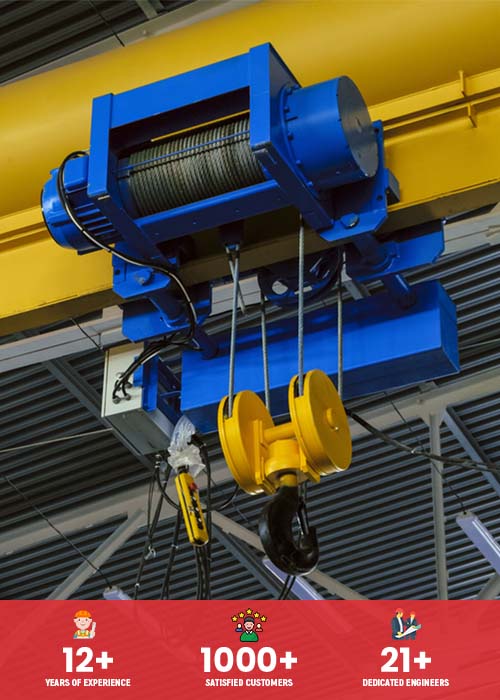Understanding How To Use: Electric Wire Rope Hoists
There are other types of hoist which are operated manually and some pneumatically. Electric Wire Rope Hoist, as the name means, uses electricity to lift the heavy load with the help of the drum which is wrapped with a rope or chain. It is used for lifting up and down heavy loads at the industries, especially, construction sites. They are useful in the condition where it is risky for a human to stand. It has the capacity to lift weights from 500 KGs to 20 Tons. However, before buying this product, clear your requirements with the company to avoid future troubles.
Usage of the hoist is a tricky job, but it could be made comfortable by operating it the right way. Before using any device for the first time, you should be familiar with its working components. The EOT crane manufacturers in Ahmedabad suggests that a person familiar with working and the type of components has less probability of an accident. So, let’s see the most common components of a wire rope hoist.
Also, it is a good idea to use such products under an expert supervision. This blog intends to provide “Electric Wire Rope Hoist Manual” to the users;
Directions and Uses of Electric Wire Rope Hoist
Frame
It is one of the main components made to provide easy access to gears and another system. All the helical teeth in gears are made with high precision.
Rope Guide
It is also named as a pressure ring, and is a central feature of the elevator. It is made of cast iron for better rope lay. Sheave grooves even contain some guide rings.
Motor
It has a foot-mounted squirrel cage type induction motor which is formulated and manufactured according to Is-325 standards.
These motors come with a high torque especially designed for hoist duty.
Motor rated for half an hour.
Rope Drum
It is only used for lifting an item fully without any over-winding. It is manufactured from steel plating and seamless pipes. It is beneficial in reducing the pressure of cables and ropes used for lifting and enhance the smooth running of every part.
Bottom Block
It consists of drop created steel hook which is ascended on the thrust bearing with plates manufactured of steel and wide diameter sheave.
Limit Switch
It is one of the most useful and must have a device which ensures the lowest and highest position of load hook in an elevator. It is provided with each hoist to alert the user about over winding of wire rope.
Brake
Brakes accomplish all the massive operations since these are the ways to control the machine. Brakes in hoist are disc-type and spring-loaded. They are fitted at the non-driving end of the motor and are vulnerable easily for use.
Gears
Teeth helical or spur gears are made up of alloy steel. They run on ball-bearing and always lubricated for a better experience.
Wire Rope
It is a particular type of construction, which is a unique and flexible steel rope. It has a safety factor of 6 for the class second duty cycle. It has many individual applications in the elevator.
Check the voltage:
Every product is made for a different electric force. Check the voltage required for your product before bringing it to use. If there is a slight difference in the voltage the speed of the hoist will also differ.
Lubrication check:
See the parts of the hoist are properly oiled and greased. The swift and smooth lifting and lowering of the good highly depends on the lubrication.
Test Function Buttons:
Each button of the hoist needs to function properly. Test the stop button by turning it left to check the hoist stops immediately whenever required. Also, check the movement of the wire rope hoist is proper.
Avoid Untangling:
Lower the rope fully when the hoist is up and see if it is not tangled. If so, untangle it. For the successful movement of heavy load it is very important that the rope is not tangled.
Limit Switches Test:
It is the most important function of the electric wire rope hoist. When the hook reaches the top it should disconnect and the same must happen when the hook reaches the ground. Repeat this practice two times.
Cross Travel Motion Test:
The second set of arrows helps move the load left to right and vice versa. Press these buttons to test whether the movement is proper or not. Also, test the cross travel motion of the hoist by taking it to the top.
Crane Motion Test:
This third set of the buttons helps move the crane horizontally. Test the crane by taking it to the top till the gantry rails.
Load Test With The Trial run:
This first set of buttons is used to lower and lifting the load. Press the down button till the hook reaches the ground and attaches with the load, then press the up button to lift the load up and detach the hook.
Be Safe:
All these practices must be done under an expert supervision. Also, ask your workers to take proper training before using it. Never stand near or under the crane whenever it is in the use. Avoid using the control buttons without any guidance.




